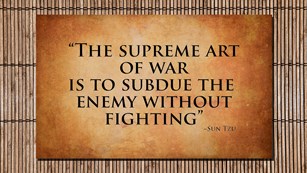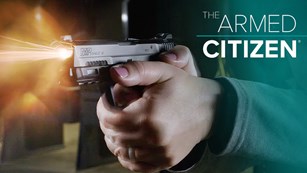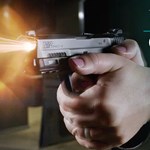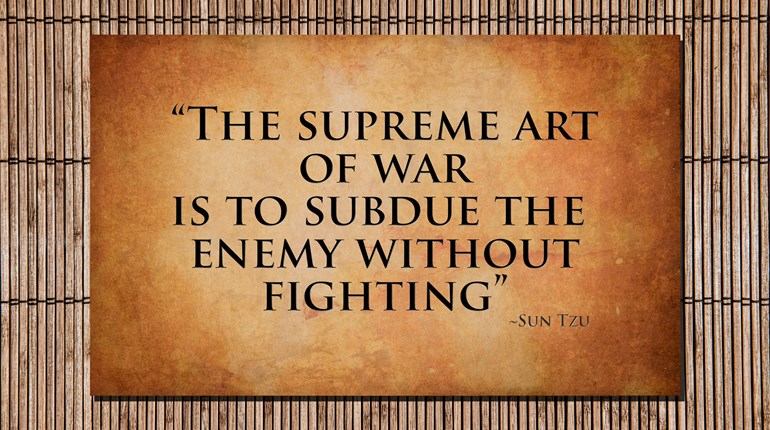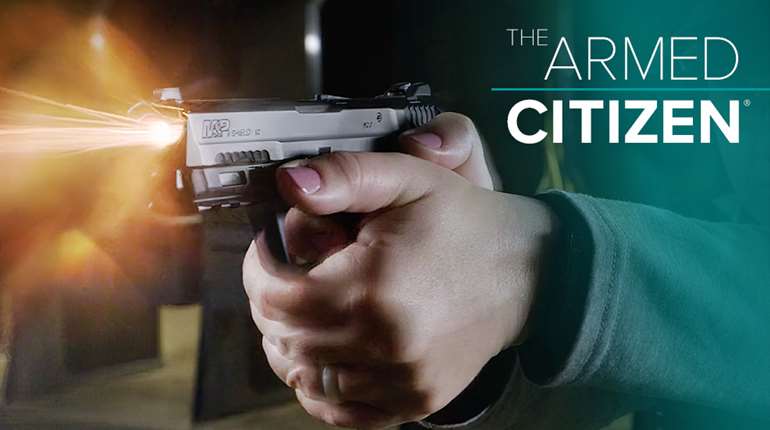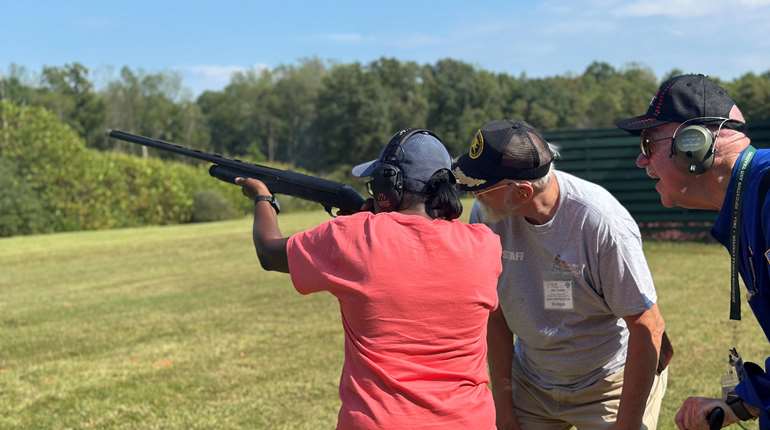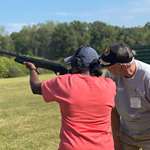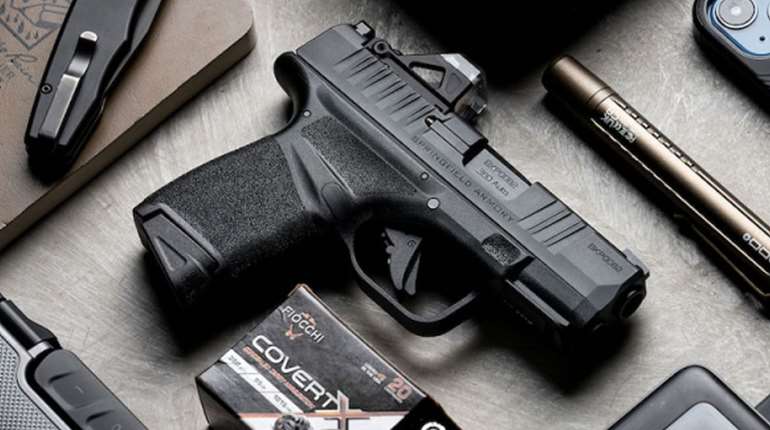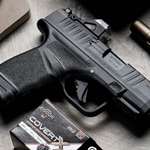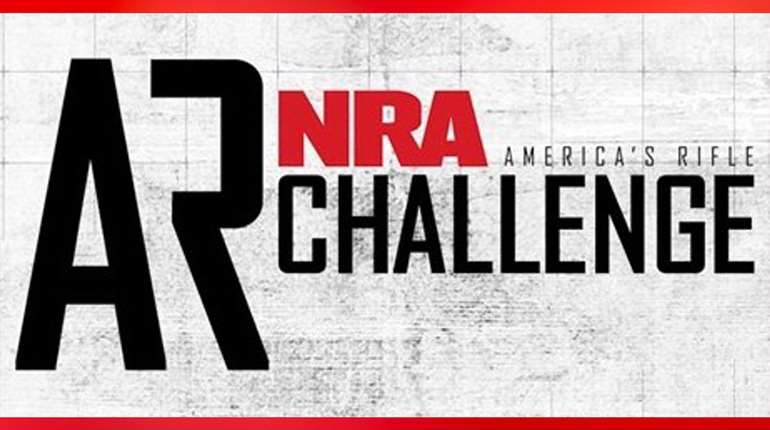
1. Reticle
First up, an easy one: The reticle is the visual aiming device you see when you look through a riflescope. Many people call it the “crosshair.” Reticles can be as simple as two perpendicular, intersecting lines or can get extremely complicated with many hashmarks that will be helpful for windage and elevation compensation and for measurement (if you know how to use them). The more data your reticle offers, the more visually cluttered it will be. Buy only as complicated as you need—for most hunters, the simple two-crossed-lines type is plenty. Some reticles come illuminated, which can help in low light.
2. Eye Relief
Eye relief measures how far your eye needs to be from the lens in order to see a full picture through a scope or binoculars. If you’re only seeing a partial picture with a black ring or haze around it, you don’t have the proper eye relief. Standard eye relief on most scopes is between 3 ½ to 4 inches. A scope with a little more eye relief, typically 4 ½ to 5 inches or even more, is called for if you’ll be mounting it on a larger-caliber gun to prevent the scope from hitting you in the forehead when the gun recoils. Longer eye relieve can also be helpful if you’ll be hunting in mountainous terrain where you might be aiming uphill, in which your eye relief will naturally shorten.
3. Magnification Range
Variable-power scopes (scopes on which you can adjust the magnification) have a set magnification range, and a scope is identified by certain numbers that list this range. For example, the classic 3-9x40 hunting scope has a magnification range of 3X to 9X. This means you will see an image through the scope that is three times larger than what you’d see with the naked eye, and you can adjust it to appear up to nine times larger than what you’d see with the naked eye.
4. Zoom Ratio
A scope’s zoom ratio is calculated by its magnification range. For example, a 3-9X magnification range exhibits a 3X zoom ratio (9 divided by 3). A scope with a 5-25X magnification range has a 5X zoom ratio. More magnification and a higher zoom ratio is not always a good thing—higher magnification means a heavier scope, a smaller field of view and much more sensitivity to movement/wobble. Buy as much magnification and zoom range as you need, but not more.
5. Tube Size
Tube size is what it sounds like—the size of the tube that connects the two lenses of a riflescope. The larger the tube, the more windage and elevation adjustment the scope’s turrets will allow. In the U.S., the most common tube sizes are 1 inch, 30mm (which is slightly larger than 1 inch), and the more rare 34mm. Larger tubes generally mean larger and heavier scopes, which you might not want or need, so don’t bother buying a larger tube unless you plan to shoot long-range, in which case, you might need the extra adjustability. Larger tubes do not increase light transmission—if anyone is claiming that, it’s ignorance or marketing hype.
6. Exit Pupil
The objective lens on a riflescope is the lens that’s farthest from your eye—it’s represented by the “40” in a 3-9x40 scope. If you divide the objective lens diameter by the magnification (the max of “9” in a 3-9x40 scope), you get the exit pupil, 4.44 in this example. A higher exit pupil will deliver more light to your eye (see Light Transmission below). A lower magnification and a larger objective lens will both lead to a higher exit pupil and thus more light, but everything’s a trade-off, and at a certain point, it becomes moot, for reasons discussed on the next point.
7. Light Transmission
Scopes do not “gather” light; they merely transmit light to your eye. They cannot transmit more light than what actually exists, and all that light has to travel through multiple lenses and components inside a scope, so what you see through your scope will always be at least slightly darker than what you can see with the naked eye. Better coatings, bigger objective lenses, the construction of the scope and more play into this, and the low-light hours around dawn and dusk are when good scopes separate themselves from lesser scopes, in part thanks to better light transmission. However, the human eye can only accept so much light at one time, so there is an upper limit to how much light transmission you need. After a certain point, it’s a waste, because your eye literally can’t process it.
8. Coatings
Each optics manufacturer has their own coatings they put on their lenses. These serve a variety of functions, from scratch-resistance to reducing reflection (thus increasing light transmission) to waterproofing and fog prevention. Lenses can be fully coated, which means all surfaces are coated with one layer of material on all lenses and prisms; multi-coated, which means some of the lenses and prisms have multiple layers of coatings; or fully multi-coated, which means all lenses and prisms have multiple layers of different types of coatings. Fully multi-coated lenses are mostly standard these days.
9. Nitrogen-Purged
You might see a manufacturer boast that their scopes are nitrogen-purged or argon-purged. Nearly all scopes are. This just means the specified gas has been pumped into the scope to flush out any moisture or oxygen. If moisture were to remain trapped in the scope body, it would condense and fog the lens; it could even mold or corrode the internal components. Purging does not guarantee a scope won’t fog up, but it does prevent corrosion and reduce the chances of internal fogging due to trapped moisture.
10. Parallax
Parallax is the perceived change of an image based on an angle. Parallax problems arise in a riflescope when the reticle and the image of the target are focused on different planes. What’s that mean? Hold your finger out in front of you at arm’s length, point at a picture on the wall, and close one eye. Now switch eyes. See how the wall in the background seems to shift when you change eyes? It’s because the wall and your finger exist on different planes. The same thing happens inside a scope if the parallax is not right, because the reticle and the target image are focused on different planes. A scope is parallax-free only at one specific distance that is set at the factory, which is usually between 100 and 150 yards, and you probably won’t have noticeable parallax problems if you stay close to that range. If you shoot much farther, though, you might need to make adjustments using the scope’s parallax dial. When parallax is right, the image you see in the scope will be clearer and more focused, and the crosshairs will not move when you move your head around.








